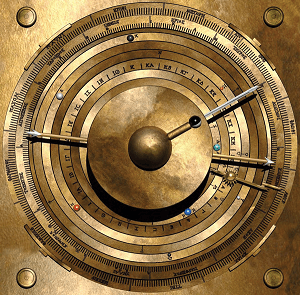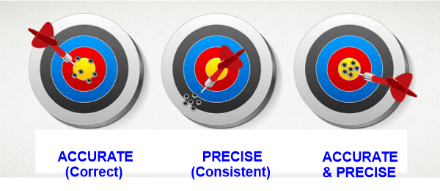Difference Between Accuracy And PrecisionBoth precision and accuracy can be used to gauge performance. Accuracy gauges how closely outcomes match the real or predetermined value. Contrarily, precision assesses how closely related outcomes belong to one another. Both of these are effective approaches to monitor and summarise project outcomes. In everyday life, accuracy and precision are frequently used interchangeably. But they have distinct definitions when used as units of measurement. A measurement is not always exact just because it is accurate, and vice versa. What are accuracy and precision, and why are they important for generating high-caliber work? Let's examine the distinctions between them and when and how to use each one. Both precision and accuracy are metrics that indicate how near you are to striking a target or accomplishing a task. Precision demonstrates how closely the measured results are to one another, while accuracy assesses how near you are to the measurement's genuine results. 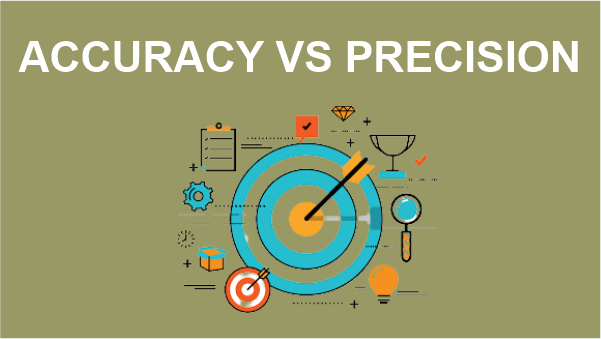
Definition of AccuracyHow closely the outcome matches the real value you set out to attain is determined by accuracy. To put it another way, it refers to how accurately you hit your target. High accuracy occurs when you hit your target value exactly, whether it's a tactical objective or a personal triumph. When you're way off the target, you have little accuracy. Although repetition will be crucial in assessing if this can be sustained as a long-term success, accuracy may be determined after a single occurrence. Let's examine a case in point. You've established a KPI to lower the bounce rate on your website by 12% throughout the ensuing fiscal year. You have accomplished 100% accuracy in establishing and achieving your goal KPI when your accurate measurement demonstrates that you meet your acceptable value-exactly 12% at the ending of your fiscal year. 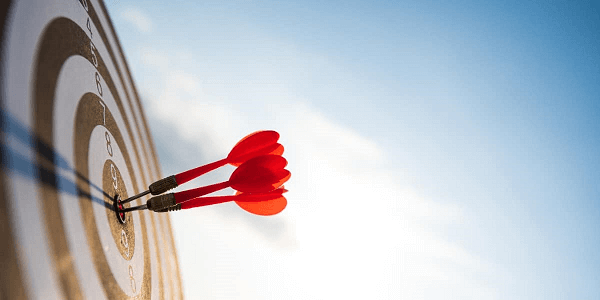
Definition of PrecisionHow closely your results match one another is referred to as precision. Although it may be employed in one situation, precision is something that is evaluated throughout time. This is because repeatability is necessary for precision in order to assess the degree of similarity amongst each set of data. Low precision would be when your findings are dispersed, whereas high precision occurs when they are comparable to one another. Two situations call for the use of precise measurements:
The most popular illustration of the distinction between precision and accuracy is the bullseye. Consider tossing darts at a target. Being accurate while also being exact is the aim. To hit the target as frequently as feasible, in other words. If you are just accurate, your darts will generally land around the target but may miss it sometimes. If you throw darts with simple precision, they will land closely to one another but not necessarily near to the target. The best case scenario is that your darts will always land in the bullseye if you are accurate and precise. 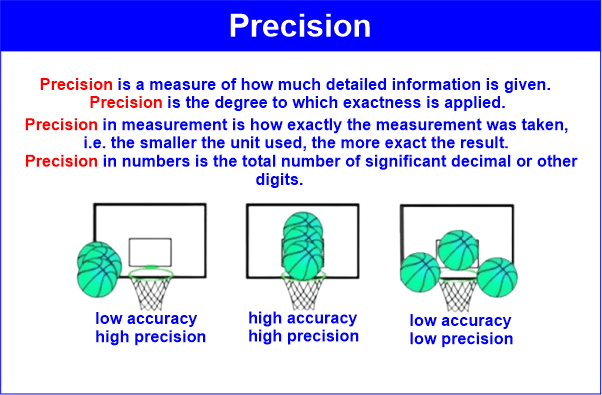
How Can Precision and Accuracy Be Monitored And Measured?You must monitor and evaluate your outcomes in order to determine your accuracy and precision. Precision and accuracy are gauged in numerous ways:
You should look for a measuring method that is both manageable and precise. You may monitor outcomes in real-time and take appropriate action by using software for project management with universal reporting. For instance, if you observe exact findings that are consistently shifting away from your intended aim, you might have a systematic problem that has to be fixed. ExamplesA measurement might be exact but not accurate, accurate but not precise, neither, or both.
Precision measures how strictly that correctness is adhered to-how repeatable the outcomes are-in contrast to accuracy, which is the measure of correctness. Think about the outcomes of a session of target practise for this illustration. Measurement CountBy taking repeated measurements and averaging them, accuracy may be increased. (This is predicated on the assumption that mistakes are equally distributed among both below and above the real value.) So long as the right statics are used, an experiment with poor precision can nonetheless yield accurate data. Contrarily, precision cannot be increased by repeated measurements, yet precision cannot be quantified without repeated experiments. It's risky to evaluate an experiment since not all errors are random. In this situation, an experiment may be exceedingly exact yet producing false findings. 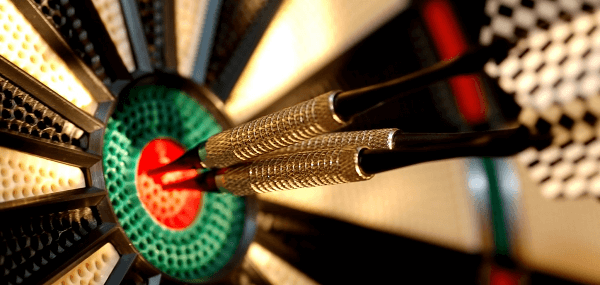
QualityA readout that is accurate won't speak well of the quality of an instrument, even as a measurement that is exact may. A measured value and an expected value must concur for there to be accuracy. A stopped clock, for instance, will be precise, or able to constantly and precisely track time throughout the day, twice in a 24-hour period. The accuracy with which a clock counts time is crucial and defines the level of performance. 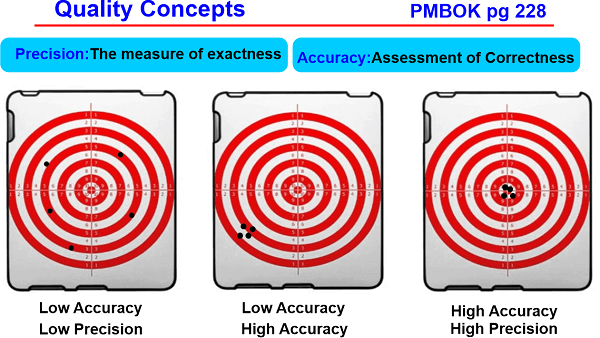
ConclusionUltimately, to produce your greatest work, you'll need both precision and accuracy. Over time, you could hone your precise abilities and continuously missing your target until it finally clicks into place. All of a sudden, you are repeatedly hitting your desired goal thanks to your accuracy. That is how you may take your work, business, and profession to a far higher level. It could be time to seek assistance in order to decrease mistakes and increase productivity. The achievements you achieve are tracked, reported on, and measured using project management systems. They can assist you in streamlining your efforts to provide more precise and accurate outcomes. Therefore, the outcome would be error-free provided the actual measurement was accurate and precise. The outcome will be at odds with what was anticipated if somehow the actual measurement is accurate but exact. There are significant differences in the measurements if the real result is exact yet correct. Finally, the outcome would be lacking in both correctness and exactness if the actual measurement was neither accurate nor precise.
Next TopicDifference between
|
 For Videos Join Our Youtube Channel: Join Now
For Videos Join Our Youtube Channel: Join Now
Feedback
- Send your Feedback to [email protected]
Help Others, Please Share





